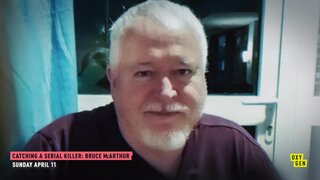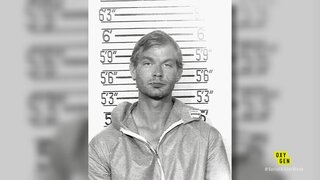Create a free profile to get unlimited access to exclusive videos, breaking news, sweepstakes, and more!
Men Kept Going Missing From Toronto’s Gay Village — Why Did Police Deny There Was A Serial Killer?
Bruce McArthur was eventually convicted of killing eight men, most of whom had vanished from Toronto neighborhood The Village in the span of a few years.
For years, residents of the Village, an LGBTQ-friendly enclave in Toronto, suspected there was a serial killer in their midst.
From 2010 to 2017, several men in the neighborhood vanished. Missing persons posters plastered the sidewalks. A sense of unease pervaded the Village, according to “Catching A Serial Killer: Bruce McArthur,” a new special on Oxygen.
Despite the rash of disappearances and the similarities between the missing men — many were of Southeast Asian or Middle Eastern descent, all were gay, all vanished within the same area — Toronto police refuted the idea of a serial killer even just several weeks before the arrest of Bruce McArthur, a 60-something landscaper and occasional mall Santa who was eventually convicted of murdering eight men.
"We follow the evidence, and the evidence tells us that's not the case right now. The evidence today tells us there's not a serial killer,” Police Chief Mark Saunders said in December 2017, the Toronto Star reported at the time.
The Toronto police was heavily criticized by the public for this decision, with many claiming racism and homophobia hampered the investigation, and others saying it could’ve saved lives if authorities hadn’t downplayed the idea there was a serial killer in the area, as seen in the special. In fact, in June 2018, an independent review began of how Toronto police review missing persons cases, and whether police’s investigations could have been “tainted by systemic bias or discrimination,” according to a 2019 Toronto Star article.
Sasha Reid, a University of Toronto PhD candidate specializing in statistical analysis of missing persons and sexually motivated killers, told CTV News in 2018 that she had warned Toronto police a serial killer was preying on men in the Village a year earlier. While creating her own missing persons database she noticed striking similarities between some of the vanished men.
“At a certain point, you know that there is a serial killer operating. Studying serial homicide for over 10 years now, you learn not to ignore patterns,” Reid said. “I got interested in maybe creating a reverse profile. So I used victim data to create a criminal profile for the police, and armed with that data, I gave them a call.”
Authorities thanked her for the data, but that was the end of the conversation, said Reid.
University of Toronto associate professor of sociology Jooyoung Lee also spoke about the possibility of a serial killer in an interview with Toronto.com in 2017, saying the disappearances have “all the signs of what we typically see” in serial murders.
“Any time you have a collection of missing persons cases … that usually is a kind of warning sign. And it sort of fits into the narrative of a lot of other [serial homicide] cases,” Lee said. “Jeffrey Dahmer, for example, used to hunt for his victims in gay bath houses and gay bars in Milwaukee.”
Police acknowledged they were getting many calls reporting suspicions a serial killer was stalking the area, the outlet noted, but did not label the missing persons cases as a string of serial killings until McArthur’s capture. Why?
Well, Toronto authorities have long maintained there was no actual evidence pointing toward a serial killer, which is they never told the public one may exist.
"We've always had that feeling," Det.-Sgt. Hank Idsinga told CBC News in 2018. "Until I have that evidence, I can't say it. And that's what we dig for […] It's easy to say in hindsight now 'well, you should have known something is up.' Well, we did know that something was up, we just didn't know what it was and we didn't have any evidence of what was going on.”
There wasn’t even any evidence, Idsinga emphasized to the Toronto Star that same year, a crime had been committed. After all, there were no bodies found. The men were simply gone. Two other people who had vanished around that time frame weren’t victims of foul play at all — one died by suicide and the other eventually turned up just fine.
“You never know what the end result is going to be. Just because somebody’s missing doesn’t mean they’ve been murdered. First you have to establish that there’s been a criminal offense and then decide what his role is in that offense being investigated. Was he a suspect, was he a witness, was he a victim?” Idsinga said.
Police Chief Saunders maintained that defense, telling CP24 in 2018, "As soon as that evidence was received that had the ability to make an arrest we exercised what we had to do […] “The evidence was presented to us at that particular moment it was very accurate. In the courtroom the storylines will play out and will articulate exactly what happened, what we knew and what we did with it and based on that did we do the right thing or the wrong thing. I’m comfortable with the investigation.”
However, he then sparked fury with comments made that same year when he told reporters, “We knew that people were missing and we knew we didn’t have the right answers, but nobody was coming to us with anything,” according to a 2018 The Guardian article. Some took his remark as blaming the community for not stopping McArthur’s attacks, instead of acknowledging police error.
Outrage was further stoked when it was eventually revealed McArthur, who had already been convicted of assault with a weapon in 2001 after attacking a sex worker with a pipe, had been accused of strangling a man during a sexual encounter in 2016, according to the Toronto Star.
McArthur had turned himself into the police after the victim called 911 and he was then released without charges, the outlet reported.
McArthur had been spoken to by authorities already in the case when he was accused of violence in 2016 — in 2013, police had found a connection between him and the first three men to go missing: Skandaraj "Skanda" Navaratnam, Abdulbasir "Basir" Faizi, and Majeed "Hamid" Kayhan, CBC News reported in 2019. McArthur was then interviewed as a witness, where he admitted to having had a sexual relationship with Kayhan and a social relationship with Navaratnam, but denied knowing Faizi.
Sgt. Paul Gauthier, who was the officer who let McArthur go, was later hit with disciplinary charges of insubordination and neglect of duty in relation to his handling of the accusation, CTV News reported in 2019. He has since pled not guilty and is awaiting the outcome of the case.
In June 2018, amid the anger and frustration with the Toronto Police, an independent review led by retired judge Gloria Epstein into the way the department handled missing persons cases began. The review ended in November 2020 after speaking with over 1,200 people, and the full report as well as Epstein’s recommendations will be released some time in early 2021, Toronto City News reported at the time.
McArthur was sentenced to life in prison in 2019 for the murders of Selim Esen, Soroush Mahmudi, Dean Lisowick, Abdulbasir Faizi, Skandaraj Navaratnam, Andrew Kinsman, Kirushna Kanagaratnam, and Majeed Kayhan.
For more on this case, watch Oxygen’s new special, “Catching A Killer: Bruce McArthur.”

































